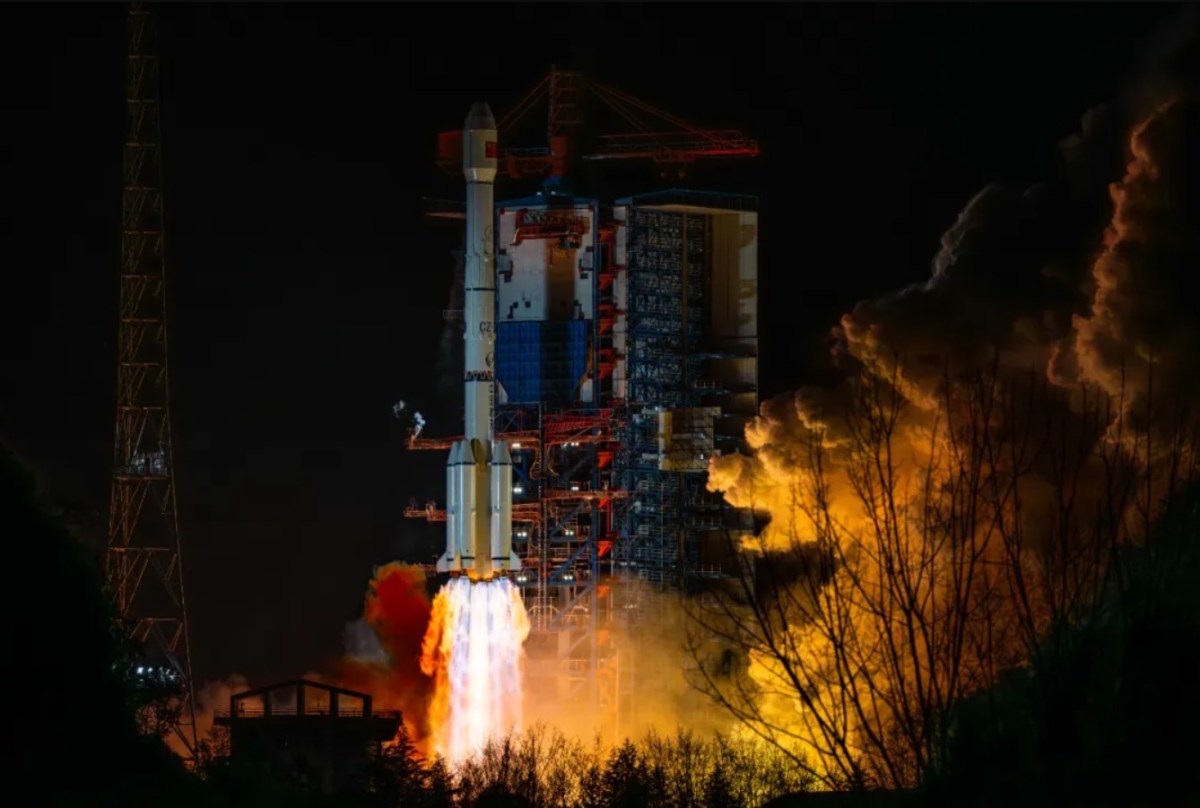HELSINKI — China has kicked off its 2025 launch activities with the successful launch of the Shijian-25 satellite, aiming to advance key technologies for on-orbit refueling and extending satellite lifespans.
A Long March 3B rocket lifted off at 3:00 p.m. Eastern, Jan. 6 (2000 UTC), climbing into a night sky above Xichang Satellite Launch Center, southwest China. The China Aerospace Science and Technology Corporation (CASC) confirmed launch success around an hour after launch, revealing the previously undisclosed payload to be the Shijian-25.
Shijian-25 was developed and manufactured by the Shanghai Academy of Spaceflight Technology (SAST), a major CASC subsidiary. The spacecraft will be used for “satellite fuel replenishment and life extension service technology verification,” according to a SAST statement.
No images of the spacecraft nor an intended target for the tests were revealed by CASC, SAST or Chinese state media. The spacecraft appears to be launched into geostationary transfer orbit (GTO). The Long March 3B is China’s workhorse rocket for launches to GTO, with airspace closure notices suggesting a GTO trajectory. China’s Shijian series is often associated with experimental and demonstration missions.
The Shijian-25 mission suggests China is focusing on advancing capabilities for maintaining and prolonging the operational lifespan of satellites already in orbit. Such capabilities can reduce costs and improve sustainability in space operations.
The mission will also be carefully followed by other space actors as the mission — especially if carried out with low levels of transparency — could be perceived as dual-purpose. While the mission may be focused on extending the lifetime of a civilian satellite, the capabilities could, for example, be used in the future to support military satellites through on-orbit servicing. The People’s Liberation Army is known to be working on the technology and training tools for on-orbit satellite refueling for both peacetime and wartime scenarios.
The mission follows the 2021 launch of the Shijian-21 space debris mitigation satellite. The spacecraft, also developed by SAST, docked with a defunct Beidou navigation satellite and towed it to a graveyard orbit above the geostationary belt, which is 35,786 kilometers above the equator. That satellite, according to an apparently model revealed ahead of launch, may have carried advanced robotic arms or docking mechanisms to capture, manipulate, and relocate satellites or debris.
Together, the missions suggest China is developing a comprehensive approach to the challenges of space operations, including sustainability, efficiency, and reducing debris. China also has a commercial company planning refueling and active debris removal demonstration mission. Meanwhile, Northrop Grumman’s SpaceLogistics subsidiary is targeting 2026 for launch for its next-generation satellite servicing vehicle, the Mission Robotic Vehicle (MRV).
Shijian-25 was China’s first orbital launch of 2025. The country is yet to publish an overview of its plans for the year, but could once again target around 100 or more launches, as forecast by CASC for 2024. The country fell short of that ambition, with 68 launch attempts, surpassing its national record for launch attempts in a calendar year by one.
China’s major missions for 2025 include crewed Shenzhou and Tianzhou cargo missions to the Tiangong space station and the Tianwen-2 near-Earth asteroid sample return mission.
CASC stated Jan.6 that it plans to launch more than 10 Long March 3 series rockets across 2025. The country will also debut an array of expendable and reusable launch vehicles this year.
